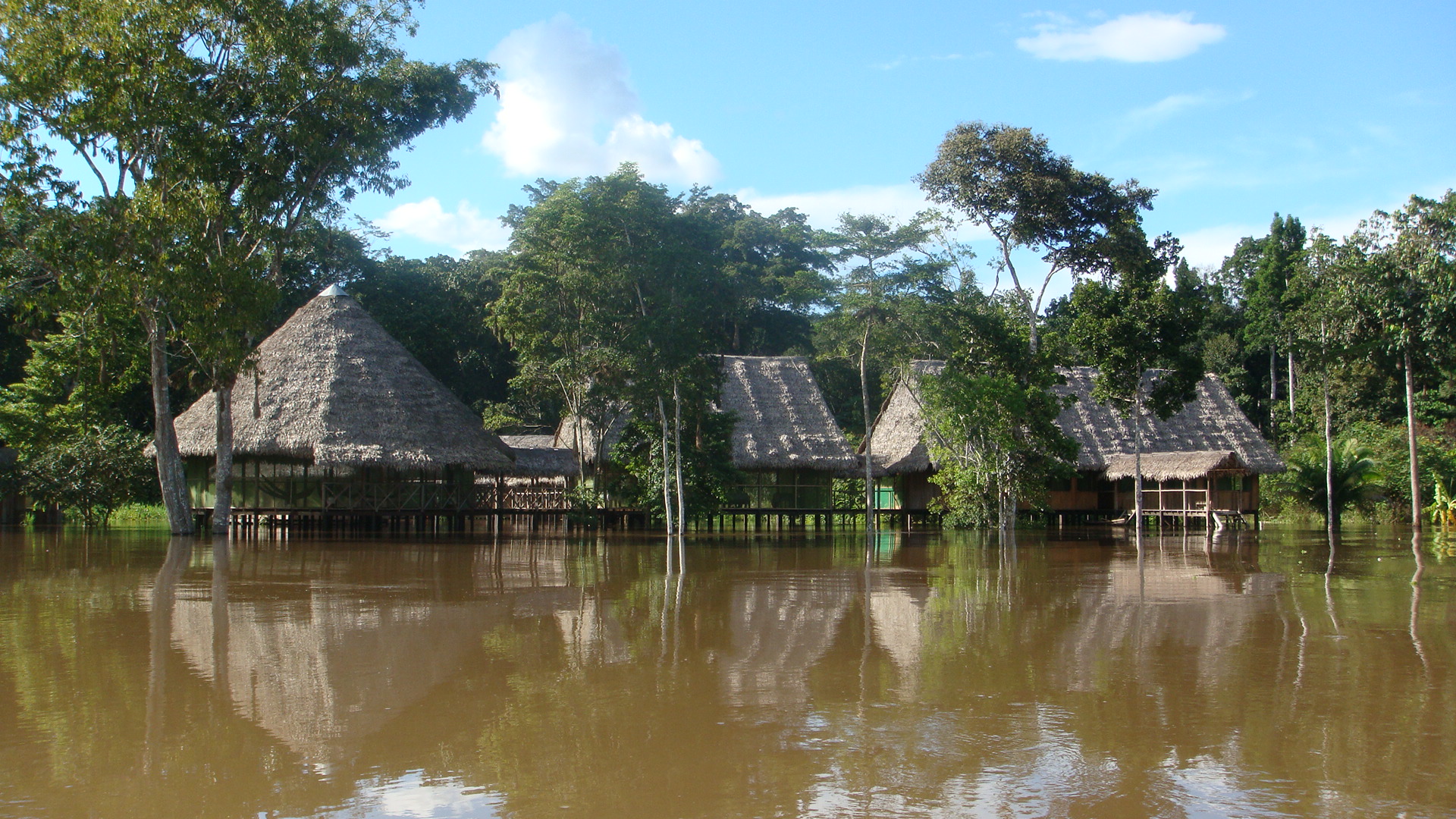AMAZON RAINFOREST
Home About Us
Amazon River Iquitos Peru
The Amazon Rainforest, considered to be one of the most beautiful places in the world, encompasses over a billion acres in the South American countries of Peru, Ecuador, Brazil, Venezuela and Columbia.
The rainforest covers more than 60 percent of Peruvian territory and though the Amazon is the largest region of Peru, it is the least populated, with approximately 11 percent of the population of the country.
The Peruvian Amazon Rainforest boasts an amazing biodiversity, with the largest number of bird species in the world and the third largest number of mammals. It is home to some of the most unique plant and animal species on the planet!
AMAZON RAINFOREST FACTS
The rainforest consists of four layers, each with important and unique ecosystems of plants and animals that have adapted to that system.
Emergent Trees
The highest layer o f the rainforest, the emergent trees layer includes trees that tower up to 200 feet above the canopy! Tree trunks can be found up to 16 feet in circumference with huge bracing, buttress roots.
f the rainforest, the emergent trees layer includes trees that tower up to 200 feet above the canopy! Tree trunks can be found up to 16 feet in circumference with huge bracing, buttress roots.
The Canopy
The canopy is the main layer of the rainforest and has very dense leaves that filter out around 80 percent of the sunlight. Epiphytes cover every inch of available surface, and you will find many fruits and flowers growing in this layer. Animals found in the canopy include sloths, monkeys, reptiles, toucans and the elusive harpy eagle.
leaves that filter out around 80 percent of the sunlight. Epiphytes cover every inch of available surface, and you will find many fruits and flowers growing in this layer. Animals found in the canopy include sloths, monkeys, reptiles, toucans and the elusive harpy eagle.
The Understory
 The understory receives only 2-5 percent of available sunlight. In order to adapt to a dim existence, plants grow large, solar-collecting leaves and are reliant on animals and insects in this system to pollinate their flowers. This layer hosts the largest concentration of insects.
The understory receives only 2-5 percent of available sunlight. In order to adapt to a dim existence, plants grow large, solar-collecting leaves and are reliant on animals and insects in this system to pollinate their flowers. This layer hosts the largest concentration of insects.
The Forest Floor
The lowest layer of the rain forest has only about 2 percent of sunlight filtering through. Few plants grow on the forest floor. Decomposing organisms and vegetation, which break down into usable nutrients, litter the forest floor. 99 percent of nutrients are found in the soil’s top two inches causing tree roots to grow close to the soil surface to have easy access to the nutrients. Large animals forage the forest floor for roots and tubers, while millipedes, scorpions and other insects use the floor litter as a food source.
sunlight filtering through. Few plants grow on the forest floor. Decomposing organisms and vegetation, which break down into usable nutrients, litter the forest floor. 99 percent of nutrients are found in the soil’s top two inches causing tree roots to grow close to the soil surface to have easy access to the nutrients. Large animals forage the forest floor for roots and tubers, while millipedes, scorpions and other insects use the floor litter as a food source.


